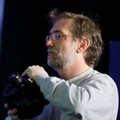(Subscribe to this discussion)
When we test an audio system or device we tend to ask the listener, "Do you hear the distortion we are testing for?," rather than "Are we testing for the distortion you hear?" In some cases the distinction between these points of view can be tremendous. Several tests will be described which were derived from the consideration of a geometry of perception and some of the preliminary results will be discussed.
Author:
Heyser, Richard C.
Affiliation:
CALIFORNIA INSTITUTE OF TECHNOLOGY, JET PROPULSION LABORATORY, PASADENA, CA
AES Convention:
51 (May 1975)
Paper Number:
1008
Publication Date:
May 1, 1975
Click to purchase paper as a non-member or you can login as an AES member to see more options.
 Scott Dorsey |
Comment posted May 16, 2021 @ 15:36:13 UTC
(Comment permalink)
This paper discusses how, by 1975, many of the standard measurements used for audio equipment had ceased to be useful to distinguish between good and bad equipment. Measurements that were effective to identify differences between simple systems of similar topology had become insufficient in a world of more complex systems of more radically varying types. Dr. Heyser describes some measurements that were no longer useful and proposed some tests that seemed useful as attempts to specifically measure some of the effects that people were starting to hear in modern systems. A couple of years after this paper, accurate FFT systems will become available and Dr. Heyser will pioneer the use of the FFT in audio systems. This will be a complete and total revolution in the way people look at audio signals and at audio distortion effects. What is interesting about this paper is that it comes right on the cusp of a revolution. It's clear that something is wrong but nobody is really quite sure what the fix is. It's right around the corner, but nobody knows it yet. (Respond to this comment)
|
![]() To be notified of new comments on this paper you can
subscribe to this RSS feed.
Forum users should login to see additional options.
To be notified of new comments on this paper you can
subscribe to this RSS feed.
Forum users should login to see additional options.
If you are not yet an AES member and have something important to say about this paper then we urge you to join the AES today and make your voice heard. You can join online today by clicking here.
